
This article will explore what a webinar is, how it works, and its benefits. We will also discuss selecting a title, configuring, and preparing for your first webinar.
Mastering Webinars: Tips for Success
Summarize with
Directory
A webinar is an online seminar or presentation that can be live or recorded and is conducted over the Internet. Typically, our video conferencing software delivers various types of information, training videos, and educational content to an audience spread across different locations.
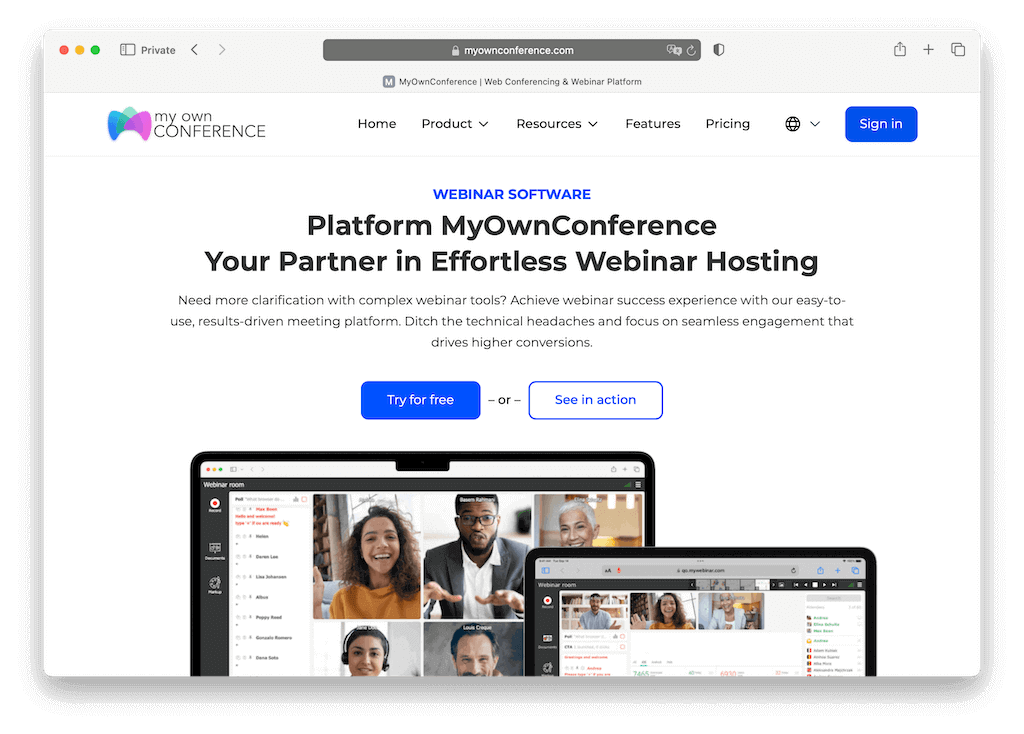
In addition, the webinar allows participants to interact with the presenter and each other through text chat features, polls, and Q&A sessions. You can use webinars for various purposes, including marketing, education, and professional development.
The main feature of live webinars is interactivity, or the ability to discuss, send and receive information in real-time. Below we’ll speak about webinar features, benefits, spheres of usage, etc. I hope this helps you to understand what a webinar is better.
Features of the webinars
- Sharing video and presentation
- Call-to-action (CTA)
- Chat
- Whiteboard
- Polls, surveys, and testing online
- Desktop sharing
- MP4 recording
- Automated webinars
Webinar’s advantages
Webinars are convenient for both presenters and attendees. This is why the format is becoming more and more popular every year.
Webinars make holding conferences and meetings possible at any time and place. Anyone can participate in a webinar without leaving work or staying home on a business trip or vacation.
You no longer need to worry about renting a venue, organizing coffee breaks, or arranging transfers because hosting a conference is now as simple as clicking your mouse a few times!
What is a webinar and what it is used for
Webinars, a contraction of “web seminars,” have emerged as a vital asset in the digital era, presenting a dynamic platform for communication, education, and collaboration. Their utility spans diverse domains, encompassing education, business, and corporate training. If you’re not yet acquainted with this concept, you can explore a comprehensive explanation of what is a webinar.
Online education
As an educator, you can reach a wider audience of students, as they will not have to spend time and money traveling. Instead, participants can tune into your training from anywhere.
You can also avoid venue rental, food, and other costs, which will allow you to charge less for the event and, thus, have more attendees.
Businesses primarily use webinars for training and updating their employees. However, only those who keep up with the industry’s latest trends can succeed in today’s fast-paced world.
Moreover, many companies have employees scattered worldwide, so it would only be too expensive to bring them all under one roof.
Marketing
Marketing is an area where webinars can bring the most benefit.
First, an online meeting showcasing your product is likely to draw more attention, as video content generates, on average, two times more engagement.
Secondly, such events help you build a long-term personal relationship with your customers. When you explain how the product works, answer questions, and follow up with the survey afterward, you show that you care.
Related Story: 7 Lasting benefits your business can gain from webinars
How does a webinar work?

Let’s say you already know the topic of your webinar and how long it will take you to present it. What do you do next?
Plan and schedule
First, you need to schedule the event. It’s easy: create an account on a unique platform and use the dashboard to set the event’s date, time, and duration.
Then comes the most important phase, which is planning. This is the stage where you can adjust the settings so the webinar matches your goals and meets your audience’s expectations.
You can also upload additional materials to make the information easier for your audience’s perception. Always double-check your webcam, microphone, headset, and internet connection before you jump into the event.
Host a webinar
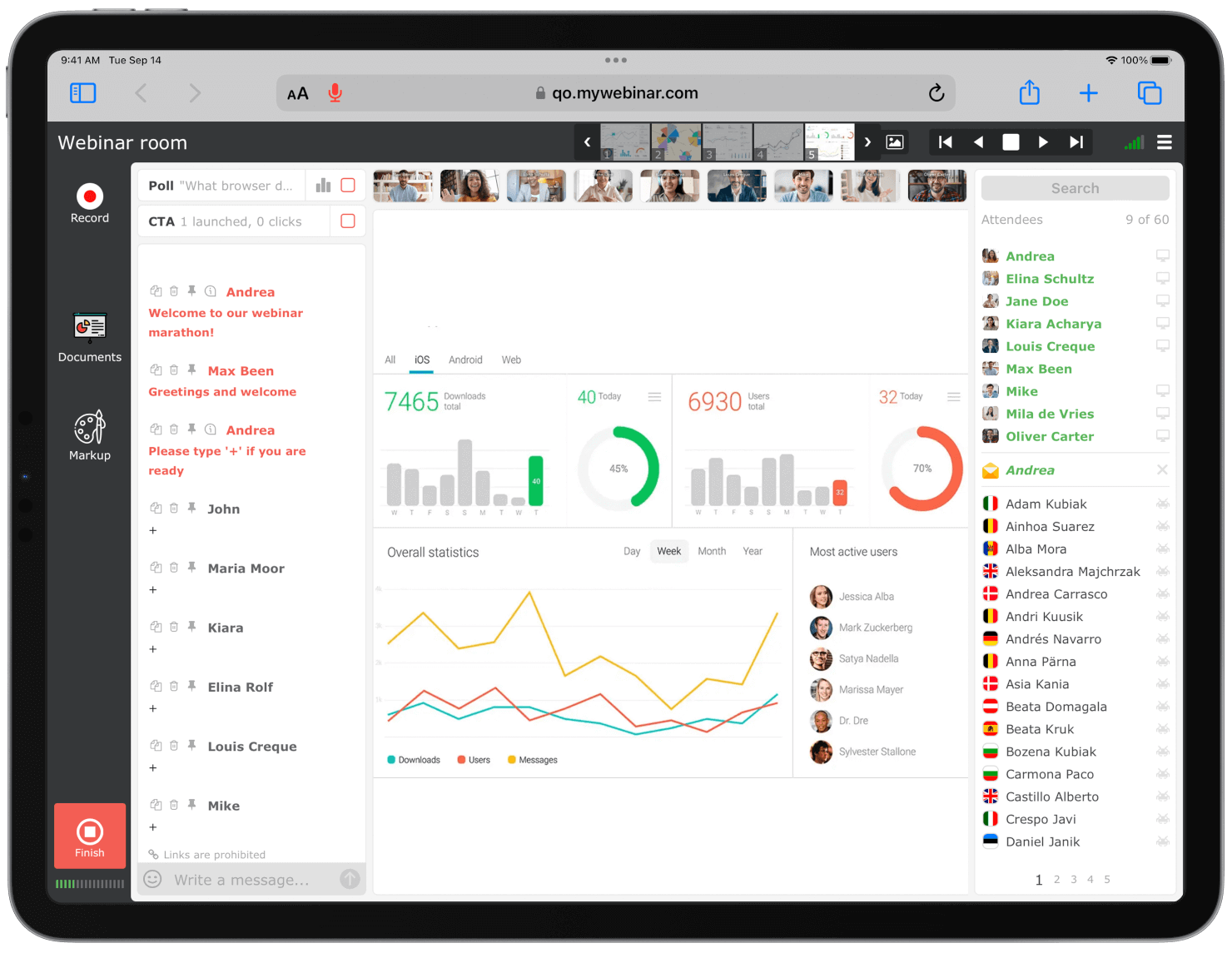
So you sent the invitation link to your attendees, checked everything was ready, and started the event. This is your chance to make a lasting impression on your audience and achieve all your goals.
Communication at live webinars goes like the following: you talk to the audience while sitting in front of a computer or a tablet. But this is not the whole story.
It would help if you used interactive tools such as desktop sharing to show digital graphs, tables, keynotes, and pictures. This will help visualize the information and make it easier to understand.
Participants watch, listen, and communicate with one another and with you via the chat or the forum.
Make sure you answer all questions and reply to all comments. When necessary, any attendee can be given a floor. However, it is not possible for you, as an instructor, to see any of the attendees during a webinar.
If you get hecklers or trolls at your live event, do not panic. Just block them yourself and ask the moderator to do it for you. Focus on providing quality content for your audience.
At the end of the session, attendees can exchange questions and answers with one another. Usually, an event recording is sent to all participants just in case someone was late or missed the online meeting.
It is also a good idea to send a quick survey to the attendees so that you know how to improve in the future.
Getting ready
You have gathered attendees for your webinar, got your keynote ready and hardware prepared. But what are you supposed to do before the webinar so that everything runs smoothly and productively? We have prepared a checklist that will draw your attention to important factors at different webinar preparation stages, so you don’t miss anything. Let’s dive right in!
What is necessary for a webinar?
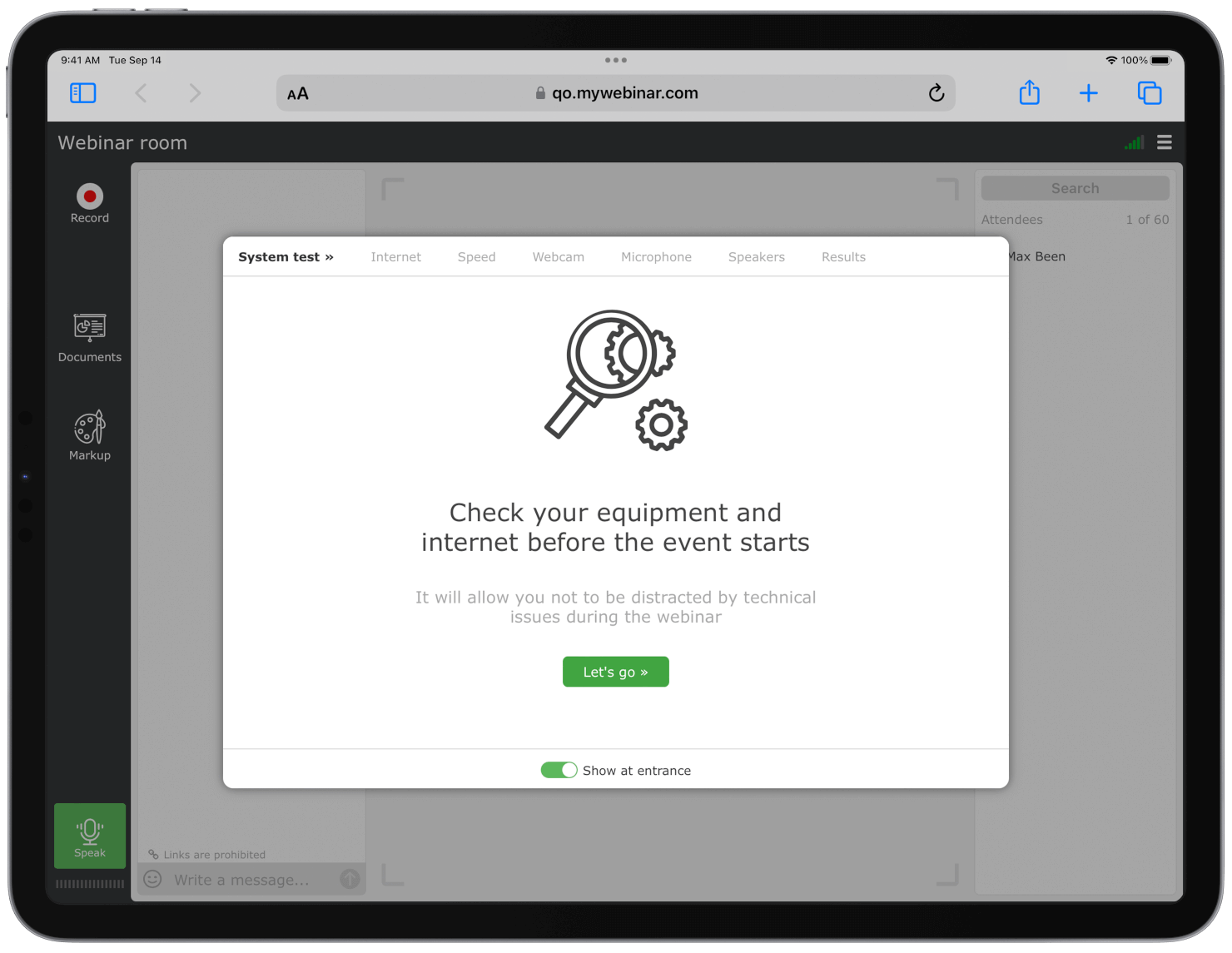
For attendees, internet access and an audio headset (headphones with a microphone) are vital.
You no longer need to install additional webinar software and special equipment for a presenter. It is enough to have a computer with an internet connection, an audio board, acoustic speakers, webcam and a microphone.
Practically all modern computers have the required components out of the box. On top of that, you do not have to possess any special technical knowledge. For example, if you can use search engines or watch videos on YouTube, you can easily hold a webinar.
Let’s hold your event in a calmer
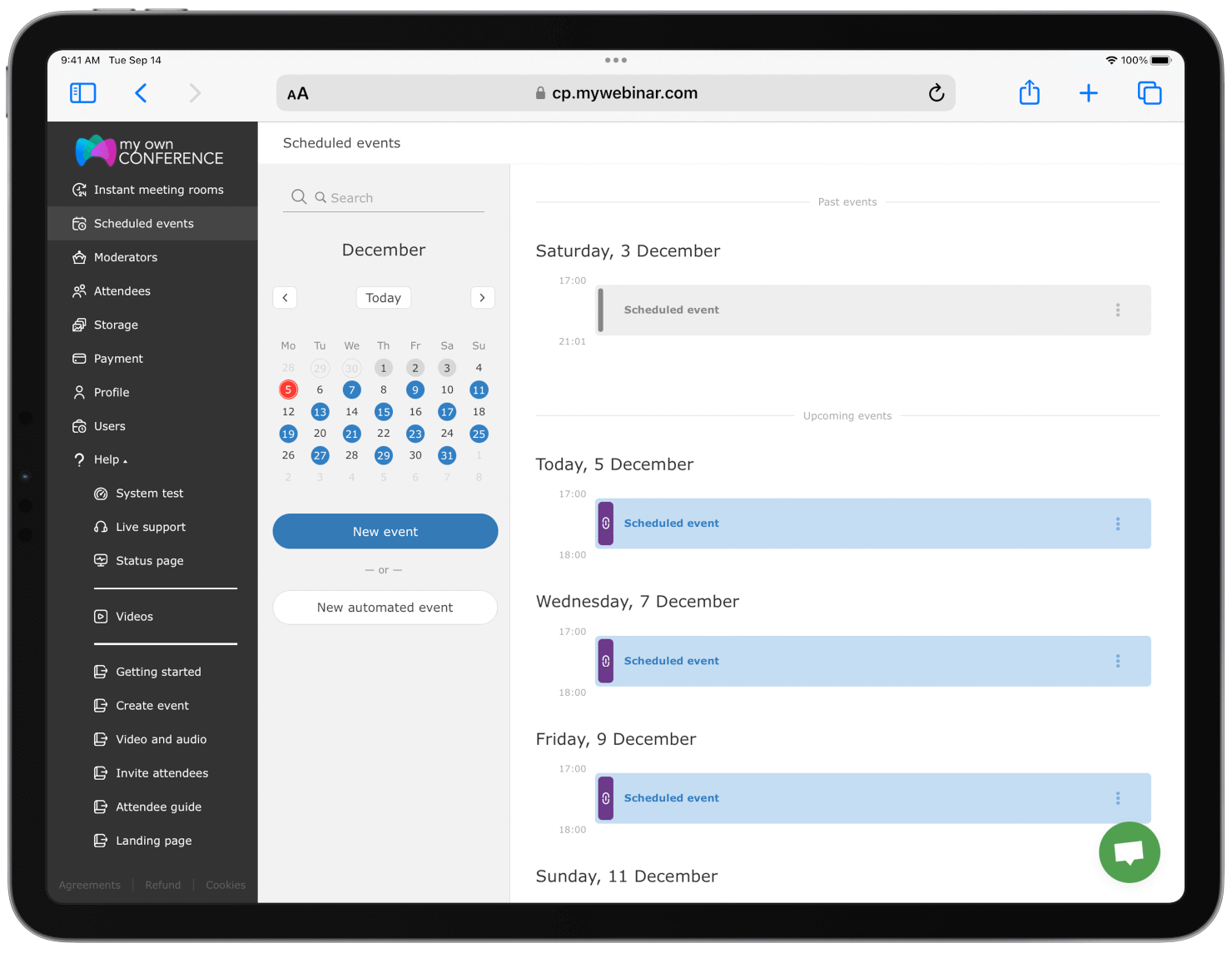
2 days before the webinar
👉 Adjust reminder emails to attendees
Before the webinar, you might need to remind your attendees about the webinar two or three times, and send the link to access it. Let’s face it, everyone is busy with their own lives. Even if they really want to attend your webinar, it is very easy to forget about it if you don’t send a reminder email before the actual event.
Reminder emails can be prepared using a special service for email campaigns or with the help of the mailing function that some webinar platform offer.
👉 Take care of your appearance
Your appearance is just as important as the content of your webinar. This is because your look can easily distract the audience from your presentation, which would be a waste of your time and theirs.
To be safe, it’s better to put on monochrome clothes. Striped or plaid shirts or blouses create unpleasant flickering on video. Clothes should not cause any discomfort or distract attention. So, put on clothes you feel comfortable wearing which will not take away the focus of your attendees.
👉 Preparation of the background
Pay attention to what your attendees can see behind you during the webinar. Avoid sitting in front of a wall filled with small details, because the camera may cause the image to flicker. Choose a solid-color background instead. Try to match it with your business or brand style if you have one. For example, sitting near shelves filled with books works well for business webinars, while a background covered with floral wallpaper may look distracting during a presentation.
One day before the webinar
👉 Upload your presentation
Add the presentation and all related materials to the webinar service. As a rule, some time is required to convert files on the webinar software, so it is important to upload the files beforehand. After the files are uploaded, check whether they are displayed correctly.
👉 Test your equipment
This is the most important step in webinar preparation. You can avoid most technical problems during webinars by simply running an equipment check. The truth is a lot of things can go wrong when it comes to online events. It is important to be sure everything is working perfectly before the day of the event. Most webinar services offer an equipment testing feature. If the test reveals any problems, you will still have enough time to fix them.
60 minutes before the webinar
👉 Check speakers’ sound and video broadcasting
Offer the presenters that are going to speak at the webinar using their webcams and microphones an opportunity to run an equipment check as well. This will help to decrease the number of technical complications during the webinar.
30 minutes before the webinar
👉 Make a greeting
If attendees enter the webinar before the event starts, sure thing, looking at an empty screen is really not ideal. So, while attendees are still joining the webinar room, you could start playing a selection of musical compositions or a welcoming video. This way, they are sure they’re in the right place, and it shows you’re ready to receive them.
👉 Unload your Internet connection
Another important step of the webinar preparation is an internet speed check. Stop all downloads and apps that could influence the speed of your Internet connectivity. It is very important to ensure your internet speed is at its best for the webinar.
20 minutes before the webinar
👉 Switch off noise sources
Get rid of any background noises. Activate silent mode on your phone. Switch off notifications on your computer. Ask your colleagues or other people staying in the same room with you not to disturb you. Basically, just make sure no noise will distract you or your attendees during the webinar.
👉 Pour a glass of water
When talking, your throat may become dry. Water or some other drink could help you to keep your voice clear and bright for a longer time. You wouldn’t want to pause the webinar to go and get that glass of water, so why not get it shortly before the event begins?
5 minutes before the start
👉 Turn on the recording
When the webinar starts, you can easily forget about the necessity of recording your webinar. This is why it is reasonable to start recording at least one to five minutes before the broadcast. It would be tragic to reach the end of your webinar and realize you forgot to record the whole thing. There is no way to get that back, so don’t risk it, start recording before the webinar actually starts.
How to choose a webinar topic?

Interesting and useful webinars attract viewers. The more viewers you have, the easier it will be for you to reach your sales and promotional goals. This article will discuss nuances to consider when choosing a webinar topic to attract as many viewers as possible.
Excellent topics
Webinars are popular because they are engaging and excellent at recreating the feeling of being present at a live event. They are a two-way street: participants can not only listen to a knowledgeable speaker, but also take part in a live discussion, ask questions, and get immediate answers.
Entrepreneurs use webinars to gather a database of potential customers and partners for marketing, public relations, and sales.
Whatever your goals may be, the core of success is always the loyal audience that loves your content and personality. And the first step towards garnering that audience is choosing the right webinar topic. Let’s explore how to do this together!
Step 1. Set goals and objectives
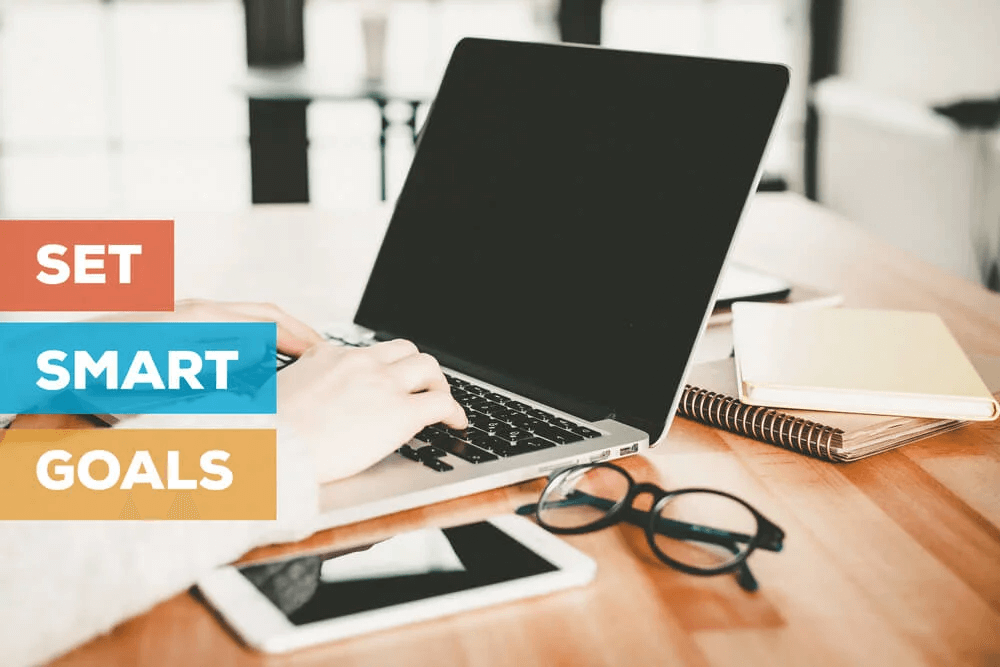
Before you start searching for potential topics, you need to set your goals and objectives.
This step should be first before anything else as it determines your target audience. If you don’t have clear goals, you may end up promoting your webinar to the wrong people. As a result, the event will be useless for you and your viewers. You won’t get as many attendees as you could.
Webinar goals can be divided into three groups
👉 Education
Educational webinars allow you to reach many people and show off your expertise, especially when answering viewers’ questions in real-time.
Webinar platform offer numerous tools to help you along: broadcasting experts and viewers, showing documents and videos, drawing on an interactive whiteboard, sharing your desktop screen, and conducting polls and tests.
👉 Marketing
Webinars help promote businesses, expertise, and products. They can help build relationships with potential clients and move them across various stages of the sales funnel. Marketing specialists use webinars to increase the loyalty of the target audience.
👉 Meetings
Webinars are helpful for international companies that have offices in many countries. Instead of traveling to the same location, their employees hold virtual meetings and conferences.
Here are some objectives a webinar can help you achieve
👉 Lead generation
If you want to have a solid database of potential customers and partners, webinars are a good way to go. You’ll see how beneficial it is for you in the future.
👉 User training
Use webinars to teach or demonstrate how your product/service works to your clients.
For example, if you’ve got an online language school, you could launch a webinar to help new students figure out the homework system. This way you help your clients quickly learn the program, and earn their loyalty.
👉 Employee training
Webinars help in saving time and money on training and updating staff.
👉 Answering questions
With webinars, you do not need to reply to every single person individually. You can just launch an online event and address all questions in one session. Again, it helps in saving your precious time.
👉 Sales
Webinars are useful when it comes to advertising and selling a product. It benefits the entrepreneurs since they get people to buy “here and now,” whereas the customers learn about the product, ask questions, and make a more informed decision.
Step 2. Determine your target audience

You cannot choose a webinar topic without knowing your target audience.
Try testing yourself and see if you really understand who your target audience is.
Answer these questions:
- Who is my target audience (TA)? What gender, age, income, and interests do they have?
- Which needs does my target audience have?
- What are the needs and fears of my TA?
- What issues does my audience face?
If you managed to give comprehensive responses, it means that you know your audience and will be able to choose an interesting webinar topic for them.
Webinars are targeted towards a specific group of people, since holding events for a disparate audience is difficult and not always possible. The narrower the group is, the easier it is to meet their needs.
Let’s say you teach Chinese and you’re organizing a webinar for beginners. At first glance, it is a pretty narrow group of people.
However, not all students are the same. For instance, some may know the differences between consonants while others can’t spot any differences.
If you don’t account for these nuances when choosing a topic, you risk disappointing a large chunk of your audience and losing prospective students.
To avoid a disaster, you should strive to narrow your target audience. So don’t just hold a webinar on the basics of Chinese. Organize an online event on the basis of Chinese phonetics.
Step 3. Make a list of topics
Now that you know the goals and objectives of your webinar as well as the target audience, you can start looking for interesting topics. Here are some helpful selection criteria:
👉 Relevance
Trends are fickle, and what is popular today may not be in demand tomorrow. However, you still need to track popular webinar topics, as they are more likely to be interesting for your audience. Also, you’ll certainly get a lot more attention than for an unpopular topic.
👉 Value
Focus on bringing value to your viewers. People show up for webinars to get information, experience, and other benefits. A valuable webinar will attract more viewers and will make them more interested in your future events.
👉 Popularity
Look up search query statistics to select a popular topic. People look for answers on the internet, and you can organize a webinar to give those answers.
Use Google Ads and Google Analytics to collect data on Google search history.
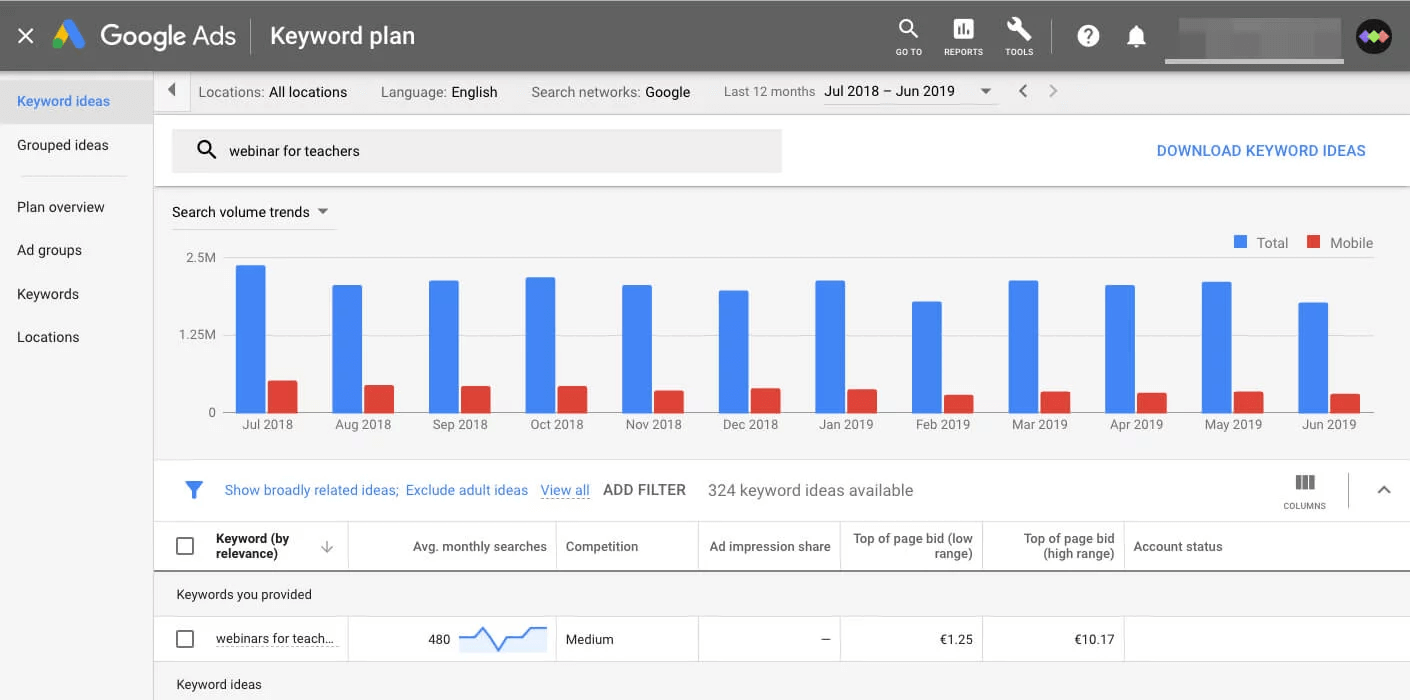
An organizer needs to analyze the search statistics when choosing a topic for a webinar. That’s how to ensure there are enough people who will be interested in the event. The more traction the topic gets, the more potential customers and viewers will register for a webinar based on that topic.
👉 Demand
Survey your social media and email newsletter subscribers to find out what topics are in demand.
👉 Competition
Your competitors have a similar target audience. Check out webinars they’re organizing. It’s not plagiarizing, since you are only looking for content ideas. This strategy is also helpful as you can discover what topics are yet to be covered, so you can be the first.
Now that you’ve got the list, you can choose the topic. Choose the one you can present and discuss in the most professional and profound manner. Don’t forget to seek help with your audience via polling and search statistics.
How to boost your webinar attendance? Find out in this article.
Step 4. Finally, choose a topic
We can’t offer you specific topics for your online seminars, since we do not know where your expertise lies. However, here are some tips for you.
👉 Behind the Scenes
Show your audience how you work on your projects.
Not only is it entertaining to the attendees, but it could also be motivating for them. It will help you build a relationship with your audience.
You can also show them how your typical day goes. Try to make it natural, don’t idealize yourself and your life. Show them that you make some mistakes, or what kind of disaster can happen in your work. The audience will feel much closer to you.
👉 Step by Step
Another idea is to make a webinar that will show the attendees how to learn a skill in, for example, eight steps. It will be very interesting to them and, more importantly, they’ll know how long it will take them to learn something.
👉 «How to…»
Have you ever wondered why many webinars start with “How to…”? That’s because they’re extremely popular. Why? People take part in webinars to learn something, and whenever we want to learn anything, we often type the word “how” in Google search. It’s also interesting that this kind of webinar is shared more frequently than others.
👉 Top Secret. Only for Subscribers
We really love secrets, so every post or video on YouTube with some tips, tricks and lifehacks can get really popular. Use this knowledge while creating a topic.
👉 Trends
Show people that you’re up-to-date and create a webinar about current trends in your industry. You could also show that your product is in those trends.
👉 Common Mistakes
Mistakes, just like mysteries, always get a lot of attention. Maybe because we’re just people, and we make mistakes, like everyone else. Or maybe because we like to listen to how others make those mistakes. There’s a saying that we learn from our mistakes. So through a webinar, help others not to make certain mistakes by showing them the most common ones.
Final words
In today’s fast-moving digital world, hosting a successful webinar is no longer just an option because it has become an essential part of communication and growth. When you clearly define your goals, choose a topic that truly matters, understand your audience completely, and plan every step carefully, you can turn what used to be a simple one-way broadcast into an engaging and valuable live experience. With the right platform and good preparation that covers everything from your setup and lighting to your reminder schedule, along with interactive tools such as screen sharing, polls, and Q&A sessions, you can create content that not only informs but also connects with people, inspires them, and motivates them to take action.
When you host a webinar with clear purpose and consistency, you become much more than a speaker. You become a trusted guide. Participants leave your event not just with new knowledge but also with greater respect for your brand, stronger loyalty, and a real sense of community. In other words, high-quality webinars act as a powerful tool that supports learning, marketing, and business growth at the same time.
As you plan your next webinar, stay focused on what truly matters. Set meaningful goals and deliver genuine value while keeping your audience engaged in real time and following up with care. When you approach your webinars this way, you will not only run effective events but also build long-lasting relationships and create measurable results that extend far beyond the live session while helping people understand what is a webinar.
FAQ
The webinar is a way to host your events and meetings online. Webinars are often used for online education, product marketing, or business meetings. All you need to participate in the webinar is your laptop with a webcam, microphone, and access to the internet.
Webinars have a lot of common advantages, but the main one is mobility. You can host webinars from anywhere worldwide as long as you have an internet connection. The participants can watch your webinar in the same way. You no longer have to spend time and money on the road and renting conference rooms.
To successfully host your webinar, you need a minimum set of tools: a computer with a webcam and microphone, an internet connection, a webinar plan, and you as a lector. If you are a participant, you also need a computer and an invitation link to the event to participate in the webinar.
To choose the perfect topic for your webinar, you need to list of subjects that you like in the first place. Next, set yourself goals for your webinar and check the trends to choose the right webinar topic that best suits you in this case.
An expert behind the simplified online meeting and webinar software platform, MyOwnConference. In today’s flexible work environment, Dan offers invaluable life hacks, in-depth reviews, and savvy tips for organizing, promoting, and excelling in virtual conferences and webinars.











